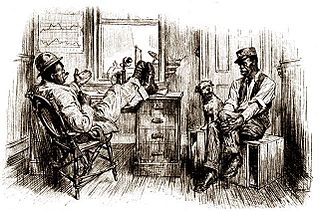 W
WThe Adventures of Ozzie and Harriet is an American television sitcom, which aired on ABC from October 3, 1952, to April 23, 1966, and starred the real-life Nelson family. After a long run on radio, the show was brought to television, where it continued its success, initially running simultaneously on radio and TV. It was the longest running live-action sitcom in television history until It's Always Sunny in Philadelphia replaced it on May 26, 2020, when that series got renewed for a 15th season. The series starred the entertainment duo of Ozzie Nelson and his wife, singer Harriet Nelson, and their sons, David and Ricky. Don DeFore had a recurring role as the Nelsons' neighbor "Thorny".
 W
WAmos 'n' Andy is an American radio and television sitcom set in Harlem, the historic center of Afro-American culture in New York City. The original radio show, which ran from 1928 to 1960, was created, written and voiced by two white actors, Freeman Gosden and Charles Correll, who played Amos Jones (Gosden) and Andrew Hogg Brown (Correll), as well as incidental characters.
 W
WEthel and Albert was a radio and television comedy series about a married couple, Ethel and Albert Arbuckle, living in the small town of Sandy Harbor. Created by Peg Lynch (1916-2015), who scripted and portrayed Ethel, the series first aired on local Minnesota radio in the early 1940s before a run on the NBC Blue Network and ABC from May 29, 1944 to August 28, 1950. It co-starred Alan Bunce as Albert.
 W
WFibber McGee and Molly was a 1935–1959 American radio comedy series. The situation comedy was a staple of the NBC Red Network from 1936 on after having begun on NBC Blue in 1935. One of the most popular and enduring radio series of its time, it ran as a stand-alone series from 1935 to 1956, and then continued as a short-form series as part of the weekend Monitor from 1957 to 1959. The title characters were created and portrayed by Jim and Marian Jordan, a real-life husband and wife team that had been working in radio since the 1920s.
 W
WHamish and Dougal are two characters from the long-running BBC Radio 4 radio comedy panel game I'm Sorry I Haven't a Clue, played by Barry Cryer and Graeme Garden, who later went on to have their own Radio 4 series, You'll Have Had Your Tea: The Doings of Hamish and Dougal. The series is occasionally broadcast on the BBC's repeat channel, Radio Four Extra.
 W
WJulian and Sandy were characters on the BBC radio comedy programme Round the Horne from 1965 to 1968 and were played by Hugh Paddick and Kenneth Williams respectively, with scripts written by Barry Took and Marty Feldman. According to a BBC Radio 4 programme on the characters, they were named after the writers Sandy Wilson and Julian Slade.
 W
WMr. and Mrs. North are fictional American amateur detectives. Created by Frances and Richard Lockridge, the couple was featured in a series of 26 Mr. and Mrs. North novels, a Broadway play, a motion picture and several radio and television series.
 W
WOpie and Anthony is an American radio show hosted by Gregg "Opie" Hughes and Anthony Cumia that aired from March 1995 to July 2014, with comedian Jim Norton serving as third mic from 2001. The show originated in 1994 when Cumia took part in a song parody contest on Hughes' nighttime show on WBAB on Long Island, New York. After subsequent appearances, Cumia decided to pursue a radio career and team with Hughes to host their own show.
 W
WThe Ron and Fez Show is an American talk radio show hosted by Ron Bennington and Fez Whatley, which aired from August 1998 to April 2015.
 W
WVic and Sade was an American radio program created and written by Paul Rhymer. It was regularly broadcast on radio from 1932 to 1944, then intermittently until 1946, and was briefly adapted to television in 1949 and again in 1957.